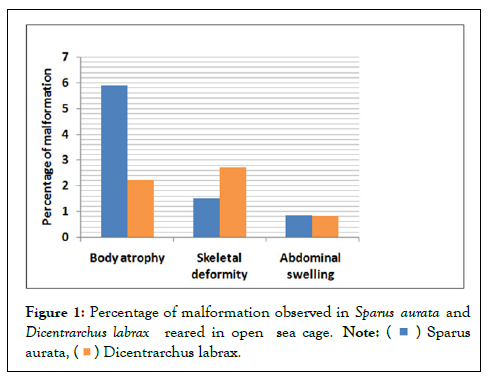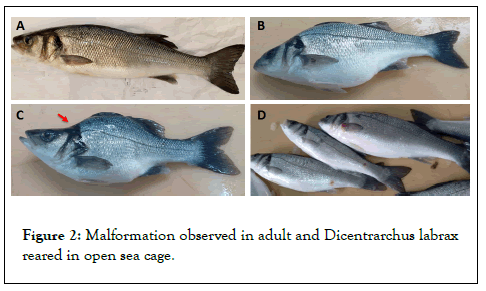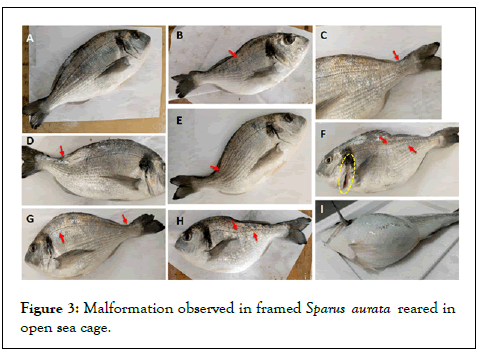Indexed In
- Online Access to Research in the Environment (OARE)
- Open J Gate
- Genamics JournalSeek
- JournalTOCs
- Scimago
- Ulrich's Periodicals Directory
- Access to Global Online Research in Agriculture (AGORA)
- Electronic Journals Library
- Centre for Agriculture and Biosciences International (CABI)
- RefSeek
- Directory of Research Journal Indexing (DRJI)
- Hamdard University
- EBSCO A-Z
- OCLC- WorldCat
- Scholarsteer
- SWB online catalog
- Virtual Library of Biology (vifabio)
- Publons
- MIAR
- University Grants Commission
- Euro Pub
- Google Scholar
Useful Links
Share This Page
Journal Flyer

Open Access Journals
- Agri and Aquaculture
- Biochemistry
- Bioinformatics & Systems Biology
- Business & Management
- Chemistry
- Clinical Sciences
- Engineering
- Food & Nutrition
- General Science
- Genetics & Molecular Biology
- Immunology & Microbiology
- Medical Sciences
- Neuroscience & Psychology
- Nursing & Health Care
- Pharmaceutical Sciences
Research Article - (2022) Volume 13, Issue 2
Abdominal Swelling and Skeletal Deformity in Gilthead Sea Bream (Sparus aurata) and European Sea Bass, (Dicentrarchus labrax) Developed under Rearing Conditions
Najoua Trigui El Menif2Department of Biology, Ecology, Biology and Physiology of Aquatic Organisms Laboratory, University of El Manar, Tunis, Tunisia
Received: 14-Jan-2022, Manuscript No. JARD-22-15482; Editor assigned: 17-Jan-2022, Pre QC No. JARD-22-15482 (PQ); Reviewed: 31-Jan-2022, QC No. JARD-22-15482; Revised: 03-Feb-2022, Manuscript No. JARD-22-15482 (R); Published: 10-Feb-2022, DOI: 10.35248/2684-1606.22.13.668
Abstract
The development of morphological deformity in cultured fish is a main problem as it affects the quality of the product. Dicentrarchus labrax and Sparus aurata are among the most cultured species especially in the European and Mediterranean Aquaculture Company. The assessment of the quality of the two species reared in open sea cage has allowed the identification of three types of malformation, body atrophy, skeletal deformity and abdominal swelling. Body atrophy and skeletal deformity were mostly observed in S. aurata 5.9% and D. labrax 2.72%, respectively. Specimens exhibiting an abdominal swelling were observed at relatively similar rates in both species. Factors probably implicated in the development of such type of malformations have been discussed.
Introduction
Malformations observed in fish were usually linked to the existence of pollutants into the aquatic system [1-3]. According to the literature, malformations in fish were also proved to happen as a consequence of several other factors as parasitic infestation, nutriments and/or oxygen deficiency, strong currents, genetic and change in water temperature [4-6]. Malformations affecting fish were detected in species collected from the natural environment, and particularly on fish species reared in hatcheries [7-10]. The commonly observed types of malformation were touching the fish skeleton [7].
In Tunisia, skeletal deformities have been reported in Atherina lagunae [7], Syngnathus abaster [11], Zosterisessor ophiocephalus [12], Gobius niger, Gobius paganellus, [13] and Aphanius fasciatus [14]. All the observed malformations were associated with the accumulation of pollutant as heavy metal; also other environmental stressors have been discussed [12,14].
In the European sea bass ( Dicentrarchus labrax ) and the gilthead sea bream ( Sparus aurata ) malformations were primarily reported to ensue in farmed fish, during larval and juvenile stages [8,15]. Indeed, it has been shown that malformation occur during the early life stages of the D. labrax as a consequence to the effect of water current [16], and temperature variation [17,18]. Also, [19] revealed the development of malformation in Sparus aurata larvae because of temperature dissimilarity.
Morphological malformations in farmed fish were considered as a serious problem for the farmers as it affects directly the quality of the product and increased indirectly the rate of mortality [4,8,20].
Dicentrarchus labrax and Sparus aurata are among the most consumed species in Europe and Mediterranean countries. Several techniques of aquaculture have been developed in order to satisfy the increasing demand on both species, which has result in a global rise in farming production [21]. Indeed, according to data from the Food and Agriculture Organization (2021) during the last two decades the global production of the two species was multiplied by four.
In the current study, we reported the occurrence of morphological malformations on the European sea bass ( Dicentrarchus labrax ) and the gilthead sea bream ( Sparus aurata ) reared in open sea cage.
Materials and Methods
Adult Dicentrarchus labrax and Sparus aurata reaching a commercial size of around 400 to 500 g and 400 to 600 g, respectively, were randomly sampled from cage belonging to a Tunisian farming company. Both species were grown in open seawater during 20 months. Fish were slaughtered by immersion in ice water (hypothermia). Specimens’ exhibiting malformations were transported to the laboratory, where they were counted; weighed using a precision scale, body length was measured using a vernier calliper to the nearest 0.1 mm. Subsequently, they were photographed a then desiccated; the occurrence and the type of malformation was noted. Comparisons were made with normal specimens reared in the same condition.
Results
The examination of specimens of Sparus aurata and Dicentrarchus labrax has allowed the discovery of malformation affecting both species. Overall, three types of malformation have been distinguished as following: body atrophy, skeletal deformity and abdominal swelling (Figures 1-3). Concerning the first type of malformation which corresponds to a general atrophy of the fish body, it was mainly detected in S. aurata 5.9% against 2.2% in D. labrax (Figure 1). However, skeletal deformity was mostly observed in D. labrax 2.72% against 1.5% in S. aurata (Figure 1). The common type of skeletal deformity found in sea bream and sea bass was lordosis (Figure 2C and Figures 3B-3E), cases of scoliosis were mostly noted in sea bream (Figures 3F-3H). Regarding the third type of malformation which corresponds to the development of abdominal swelling (Figure 2B and 2C) (Figures 3H-3I), it was recorded at similar rates for the two studied species, 0.85% and 0.8% in S. aurataand D. labrax , respectively (Figure 1). The dissection of individual presenting this anomaly has revealed the existence of seawater without any parasite. Other type of malformation has been as well detected at few specimens of S. aurata as, cranial and jaw opercular deformity (Figure 3F).

Figure 1: Percentage of malformation observed in Sparus aurata and Dicentrarchus labrax reared in open sea cage. 


Figure 2:Malformation observed in adult and Dicentrarchus labrax reared in open sea cage.

Figure 3: Malformation observed in framed Sparus aurata reared in open sea cage.
Discussion
The present work report the incidence of morphological malformations in two commercial fish Dicentrarchus labrax and Sparus aurata reared in open sea cage. Malformations observed at fish collected from the natural environment were usually used as an indicator of pollution [12]. However, malformation in fish may as well appeared under other conditions, indeed, the effect of temperature was widely reported as a determinant factor in the development of malformation in fish [10,17,18]. In this context, [10] found an increase in the incidence of malformed D. labrax developed at 20°C with comparison with that developed at 15°C. In addition, [19] detected a significant correlation between the occurrence of malformation in larvae Sparus aurata and the variation of seawater temperature.
As previously stated temperature variation is one among other factor proposed to explain the occurrence of malformation in fish. Skeletal deformity has been reported to develop as a consequence to either an excess or a deficiency in a nutritional component [22,23]. In Sparus aurata , scoliosis increased as a response to changes in calcium-phosphor hydroxyapatite salts and collagen fibers [24]. Similarly, [25] noted a rise of skeletal deformity occurrence in farmed S. aurata due to an excess of vitamin A dietary. The effect of vitamin A on the development of skeleton deformity was also reported in Dicentrarchus labrax[26]. Besides [27] proved the effect of ascorbic acid dietary on the development of such type of deformity in sea bass.
Among the factor proposed to elucidate the induced malformation in farmed fish, [28-30] discussed the role of the increased swimming activity in the emergence of lordosis deformity in farmed D. labrax
Besides to skeletal deformity, another type of malformation was observed in the studied species corresponding to the development of abdominal swelling. Usually, abdominal swelling in fish constitutes a clinical signs of parasitic infection. In this study, the dissection of specimens having an abdominal swelling did not reveal the existence of any parasite. Further analyses should be conducted in the aim to determine the reason leading to the generation of such malformation in marine fish reared in open sea cage.
Conclusion
The results of the current study reported the occurrence of three types of malformation in farmed Sparus aurata and Dicentrarchus labrax. Body atrophy was mainly observed in S. aurata. While, skeletal deformity was frequently observed in D. labrax. The third type of malformation (abdominal swelling) was detected at similar rates at both species. Additional investigations should be conducted in order to elucidate the factor inducing such types of malformations in economically important fish species.
REFERENCES
- Hernández-Moreno D, Pérez-López M, Soler F, Gravato C, Guilhermino L. Effects of carbofuran on the sea bass (Dicentrarchus labrax L.): Study of biomarkers and behaviour alterations. Ecotoxicol Environ Saf. 2011; 74(7):1905-1912.
[Crossref] [PubMed] [Google Scholar]
- Mhadhbi L, El Ayari T, Tir M, Kadri D. Azithromycin effects on the European sea bass (Dicentrarchus labrax) early life stages following acute and chronic exposure: Laboratory bioassays. Drug Chem Toxicol. 2020; 21:1-7.
[Crossref] [PubMed] [Google Scholar]
- Varshney S, Gora AH, Siriyappagouder P, Kiron V, Olsvik PA. Toxicological effects of 6PPD and 6PPD quinone in zebrafish larvae. J Hazard Mater. 2022; 424:127623.
[Crossref] [PubMed] [Google Scholar]
- Bardon A, Vandeputte M, Dupont-Nivet M, Chavanne H, Haffray P, Vergnet A, et al. What is the heritable component of spinal deformities in the European sea bass (Dicentrarchus labrax)? Aquac. 2009; 294(3-4):194-201.
- Davidson J, Good C, Welsh C, Summerfelt ST. Abnormal swimming behavior and increased deformities in rainbow trout Oncorhynchus mykiss cultured in low exchange water recirculating aquaculture systems. Aquacultural engineering. 2011; 45(3):109-117.
- Kelly DW, Thomas H, Thieltges DW, Poulin R, Tompkins DM. Trematode infection causes malformations and population effects in a declining New Zealand fish. J Anim Ecol. 2010; 79(2):445-52.
[Crossref] [PubMed] [Google Scholar]
- Ayed N, Faure E, Quignard JP, Maamouri F, Trabelsi M. Incidence of kyphosis deformities in natural population of Atherina lagunae (Trabelsi et al. 2002) from the Tunis North Lake, Tunisia. Mar Biol. 2008; 153(3):319-25.
- Barahona‐Fernandes MH. Body deformation in hatchery reared European sea bass Dicentrarchus labrax (L). Types, prevalence and effect on fish survival. J Fish Biol. 1982; 21(3):239-249.
- Jawad LA, Ibrahim M, Farrag MM. Severe scoliosis and fin deformities in three fish species collected from Jubail Vicinity, Saudi Arabia, Arabian Gulf. Thalassas. Int J Mar Sci. 2019; 35(2):591-598.
- Sfakianakis DG, Georgakopoulou E, Papadakis IE, Divanach P, Kentouri M, Koumoundouros G, et al. Environmental determinants of haemal lordosis in European sea bass, Dicentrarchus labrax (Linnaeus, 1758). Aquac. 2006; 254(1-4):54-64.
- Alaya HB, Galzin R, Quignard JP, Trabelsi M. Spinal deformities in the black-striped pipefish Syngnathus abaster (Pisces, Syngnathidae) from the Tunis North Lake, Tunisia. Chemosphere. 2011; 82(3):318-320.
[Crossref] [PubMed] [Google Scholar]
- Messaoudi I, Deli T, Kessabi K, Barhoumi S, Kerkeni A, Saïd K. Association of spinal deformities with heavy metal bioaccumulation in natural populations of grass goby, Zosterisessor ophiocephalus Pallas, 1811 from the Gulf of Gabès (Tunisia). Environ Monit Assess. 2009; 156(1):551-560.
[Crossref] [PubMed] [Google Scholar]
- Louiz I, Menif D, Ben Attia M, Ben Hassine OK. Incidence of skeletal deformities in three species of Gobiidae from Bizerta lagoon (Tunisia). Cybium. 2007; 31(2):199-206.
- Kessabi K, Annabi A, Hassine AI, Bazin I, Mnif W, Said K, Messaoudi I, et al. Possible chemical causes of skeletal deformities in natural populations of Aphanius fasciatus collected from the Tunisian coast. Chemosphere. 2013; 90(11):2683-2689.
[Crossref] [PubMed] [Google Scholar]
- Andrades JA, Becerra J, Fernandez-Llebrez P. Skeletal deformities in larval, juvenile and adult stages of cultured gilthead sea bream (Sparus aurata L.). Aquac. 1996; 141(1-2):1-1.
- Divanach P, Papandroulakis N, Anastasiadis P, Koumoundouros G, Kentouri M. Effect of water currents on the development of skeletal deformities in sea bass (Dicentrarchus labrax L.) with functional swimbladder during postlarval and nursery phase. Aquac. 1997; 156(1-2):145-155.
- Abdel I, Abellán E, López-Albors O, Valdés P, Nortes MJ, García-Alcázar A, et al. Abnormalities in the juvenile stage of sea bass (Dicentrarchus labrax L.) reared at different temperatures: types, prevalence and effect on growth. Aquac Int. 2004; 12(6):523-538.
- Georgakopoulou E, Angelopoulou A, Kaspiris P, Divanach P, Koumoundouros G. Temperature effects on cranial deformities in European sea bass, Dicentrarchus labrax (L.). J Appl Ichthyol. 2007; 23(1):99-103.
- Kourkouta C, Printzi A, Geladakis G, Mitrizakis N, Papandroulakis N, Koumoundouros G, et al. Long lasting effects of early temperature exposure on the swimming performance and skeleton development of metamorphosing Gilthead seabream (Sparus aurata L.) larvae. Sci Rep. 2021; 11(1):1-1.
[Crossref] [PubMed] [Google Scholar]
- Koumoundouros G, Maingot E, Divanach P, Kentouri M. Kyphosis in reared sea bass (Dicentrarchus labrax L.): ontogeny and effects on mortality. Aquac. 2002; 209(1-4):49-58.
- Fishery FA, Statistics A. Global Aquaculture and Capture Production: 1950-2017 (FishstatJ). FAO Fisheries and Aquaculture Department: Rome, Italy. 2019.
- Cahu C, Infante JZ, Takeuchi T. Nutritional components affecting skeletal development in fish larvae. Aquac. 2003; 227(1-4):245-258.
- Boursiaki V, Theochari C, Zaoutsos SP, Mente E, Vafidis D, Apostologamvrou C, Berillis P, et al. Skeletal deformity of scoliosis in gilthead seabreams (Sparus aurata): Association with changes to calcium-phosphor hydroxyapatite salts and collagen fibers. Water. 2019; 11(2):257.
- Fernández I, Hontoria F, Ortiz-Delgado JB, Kotzamanis Y, Estévez A, Zambonino-Infante JL, et al. Larval performance and skeletal deformities in farmed gilthead sea bream (Sparus aurata) fed with graded levels of Vitamin A enriched rotifers (Brachionus plicatilis). Aquac. 2008; 283(1-4):102-115.
- Georga I, Glynatsi N, Baltzois A, Karamanos D, Mazurais D, Darias MJ, et al. Zambonino‐Infante JL, Koumoundouros G. Effect of vitamin A on the skeletal morphogenesis of European sea bass, Dicentrarchus labrax (Linnaeus, 1758). Aquac Res. 2011; 42(5):684-692.
- Darias MJ, Mazurais D, Koumoundouros G, Le Gall MM, Huelvan C, Desbruyeres E, et al. Imbalanced dietary ascorbic acid alters molecular pathways involved in skeletogenesis of developing European sea bass (Dicentrarchus labrax). Comparative Biochemistry and Physiology Part A: Molecular & Integrative Physiology. 2011; 159(1):46-55.
[Crossref] [PubMed] [Google Scholar]
- Kranenbarg S, Waarsing JH, Muller M, Weinans H, van Leeuwen JL. Lordotic vertebrae in sea bass (Dicentrarchus labrax L.) are adapted to increased loads. J. Biomech. 2005; 38(6):1239-1246.
[Crossref] [PubMed] [Google Scholar]
- Alvarez-Pellitero P. Report about fish parasitic diseases. Etudes et Recherches, Options Mediterranennes. CIHEAM/FAO, Zaragoza. 2004:103-130.
- Eissa NM, El-Ghiet EA, Shaheen AA, Abbass A. Characterization of Pseudomonas species isolated from tilapia “Oreochromis niloticus” in Qaroun and Wadi-El-Rayan lakes, Egypt. Glob Vet. 2010; 5(2):116-121.
- Sedano J, Zorrilla I, Morinigo MA, Balebona MC, Vidaurreta A, Bordas MA, et al. Microbial origin of the abdominal swelling affecting farmed larvae of gilt‐head seabream, Sparus aurata L. Aquac Res. 1996; 27(5):323-333.
Citation: EL Ayari T, Mhadhbi L, El Menif NT (2022) Abdominal Swelling and Skeletal Deformity in Gilthead Sea Bream (Sparus aurata) and European Sea Bass, (Dicentrarchus labrax) Developed under Rearing Conditions. J Aquac Res Dev. 13:668.
Copyright: © 2022 EL Ayari T, et al. This is an open-access article distributed under the terms of the Creative Commons Attribution License, which permits unrestricted use, distribution, and reproduction in any medium, provided the original author and source are credited.

